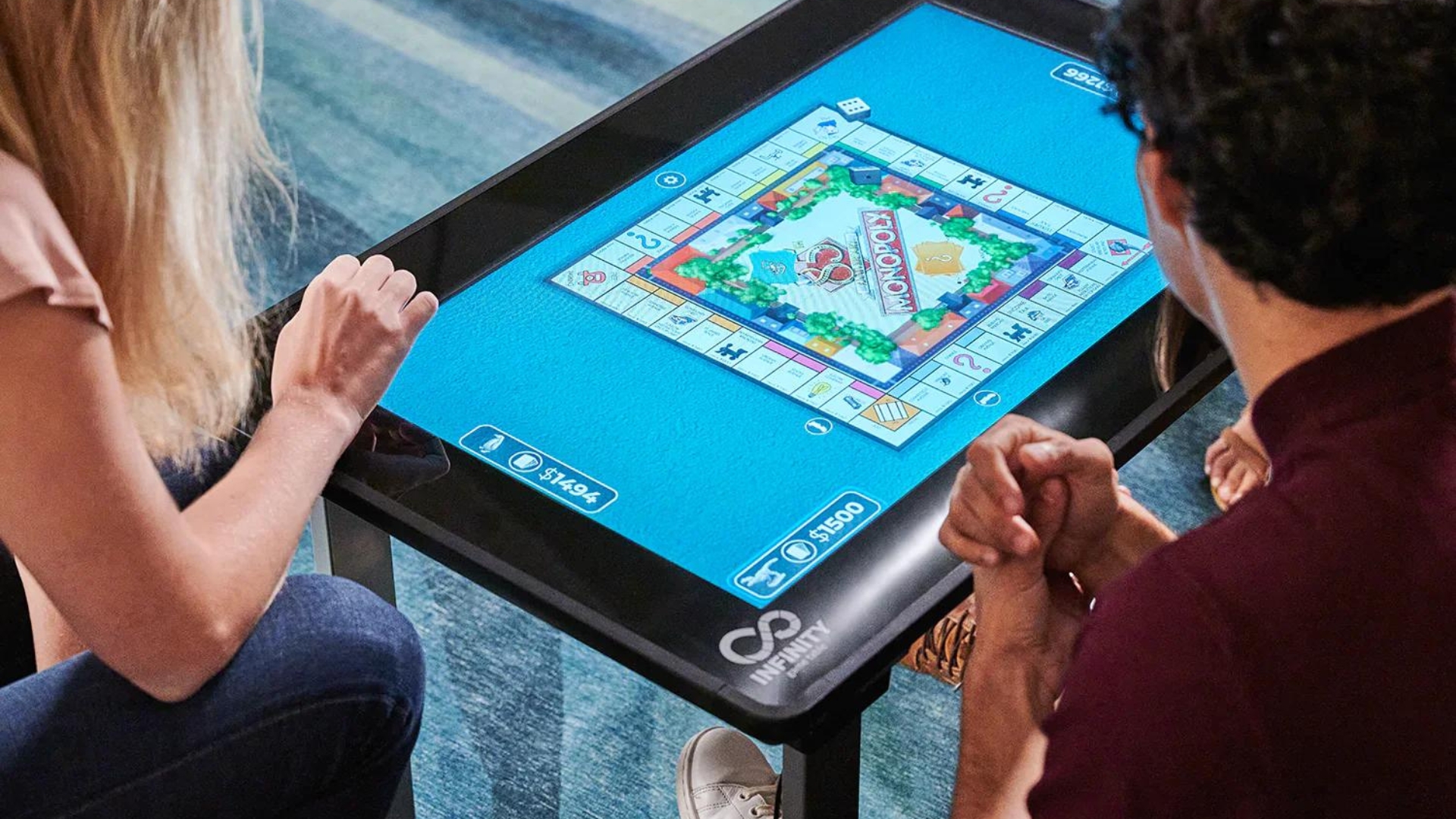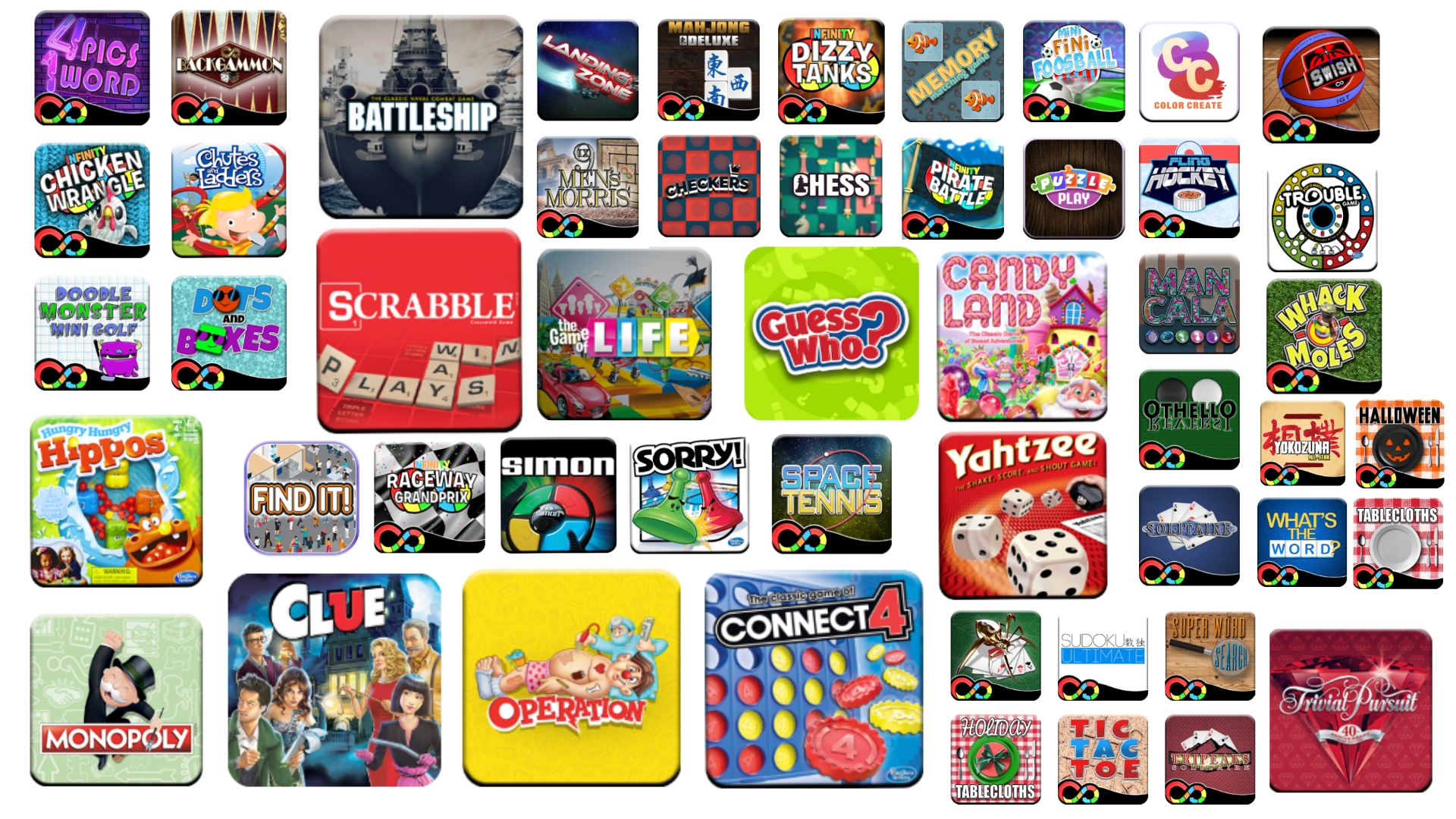I want to love Arcade1Up's Infinity Game Table, but there's too many caveats
Tabletop to digital-table might be better as an idea than reality

I’ve long wished I had more space and opportunity to enjoy board games, so when I heard about the Arcade1Up Infinity Game Table, I paid attention.
Effectively a coffee table fitted with a HD touchscreen and access to a library of up to 105 interactive board game experiences, the base idea of the Infinity Table is that it’ll save you from having to store multiple physical board games but still offer opportunities for you and your loved ones to enjoy them.
Tabletop games become the table, without any hassle of unpacking and repacking a game each time you want to play it. So why don’t I love it?
When is a table not a table?
Available in 24-inch or 32-inch size options, with Wi-Fi connectivity and a library of 51 free games included, the Infinity Table for all intents and purposes looks how you’d imagine it would: like a coffee table with a screen.
It feels sturdy, with a heft to it roughly weighing around 59.5lbs / 27kg. Physically putting it together is reasonably straightforward and theoretically you can imagine using it like any table on which to rest your morning coffee or kick up your feet. The inclusion of cardboard drink coasters in the box is also a nice addition.
But then you remember that the tabletop is actually a screen, not a solid surface like the average coffee table. Naturally this brings with it some anxiety, particularly given how much this coffee table actually costs (more on that in a moment).
If you put your feet down too forcefully, will you crack the screen? Maybe. Will the warmth of a hot coffee wreak havoc on the screen’s tech beneath? It’s possible. Arcade1Up states that the Infinity is water resistant and impact resistant out of the box but, like any screen, this has its limits, and generally a home’s coffee table is expected to withstand some wear and tear beyond what your average screen device will generally face.
Sign up for breaking news, reviews, opinion, top tech deals, and more.
The Infinity Game Table is, somewhat annoyingly, not a table you’d necessarily feel comfortable using as one.
What is this, a table for ants?!
Another shortcoming for the Infinity Game Table is its size. As a screen, the 32-inch model we tested is a reasonably generous size, but as a table? At 6 foot 3 inches, the table’s height (roughly 26-inches, or 67cm) reached just above my knee level, not only making fitting my legs underneath it impossible but also quite uncomfortable to lean over.
After only 15 minutes of use, I began to feel some pain and discomfort in my neck from leaning over the table’s screen, and this only got worse further into playtime. I might have expected a vague headache from too long spent looking at the screen, but not from physically having to lean over it.
Naturally, people who aren’t quite as tall as me likely won’t experience discomfort to the same extent, but some of those I used the table with reported similar issues – despite being up to a foot shorter.
It’s game time!

With over 50 free games to choose from, mystery who-dunnit Cluedo was the first to catch my eye. While I remembered being able to play this with as few as two players, the edition included with the Infinity Table only supports a minimum of three, taking it off the table (sorry) as an option for my sole companion and I.
Instead, we thought we’d give fling hockey a try. From the start, we found that the table’s screen has some issues tracking your attempts to ‘fling’ the hockey puck from your side to your opponent’s. And the simple back and forth of the gameplay also quickly lost its appeal.
Was air hockey always this boring? Maybe, in which case it’s hard to blame the Infinity Game Table for me misremembering how fun air hockey actually is (and isn’t) and hoping the fling-hockey experience might offer more.
OK, so what about Trivial Pursuit? A softball for the Infinity Table, there’s never likely to be much in the way of surprises when it comes to trivia gameplay. While it would have been nice to have had an option to adjust the game to better reflect the region in which I was playing it (the sole version on offer is very US-centric and I'm based in Australia) the trivia experience is generally what you’d expect, even if navigating your way around the board is pretty uninspiring.
This was a common issue for games via the Infinity Table, as its digital recreations of each game generally fell flat as experiences when compared to their physical alternatives. The presentation of each game also comes across as quite basic, with the experiences generally feeling surprisingly less interactive than they do with the physical boards or cards.
You sunk my battleship
If one of the barriers to building a collection of physical board games is cost, the Infinity Game Table sadly also comes up well short of being a wallet-friendly alternative. The 32-inch version of the table (the most widely available) will set you back $999 / £899 / AU$1,999 to start, with the 51 free games included.
There are an additional 54 games available to play on the Infinity Game Table, but adding these will cost you additional fees to unlock ($3-10 each, or roughly £2.50-8 / AU$4-14), with titles like Ticket to Ride, Pandemic and Risk among those you’ll have to pay more for. Ticket to Ride, at $10, will still cost you $30-40 less than the physical alternative, but it’s nonetheless a tough pill to swallow given how much you’ve already paid for the table.
This is perhaps what makes the Infinity Game Table hardest to recommend.
At the same time, despite that overall expense the Infinity generally fails to offer board-game experiences that are superior to (or often even match) their physical counterparts – or can act as an attractive living room centerpiece.
The idea behind it is one that’s definitely appealing and has the potential to be great. But in execution, the Infinity Game Table is an item that costs roughly the same as a premium iPad while being less practical, offering less functions and generally not presenting its digital board games in ways more convincing or fun than on an iPad.
While the Infinity Table’s build quality and general functionality are both certainly passable, for this kind of premium price you really should be able to expect a bit more.

James is a senior journalist with the TechRadar Australia team, covering news, analysis and reviews in the worlds of tech and the web with a particular focus on smartphones, TVs and home entertainment, AR/VR, gaming and digital behaviour trends. He has worked for over six years in broadcast, digital and print journalism in Australia and also spent time as a nationally recognised academic specialising in social and digital behaviour trends. In his spare time, he can typically be found bouncing between one of a number of gaming platforms or watching anything horror.